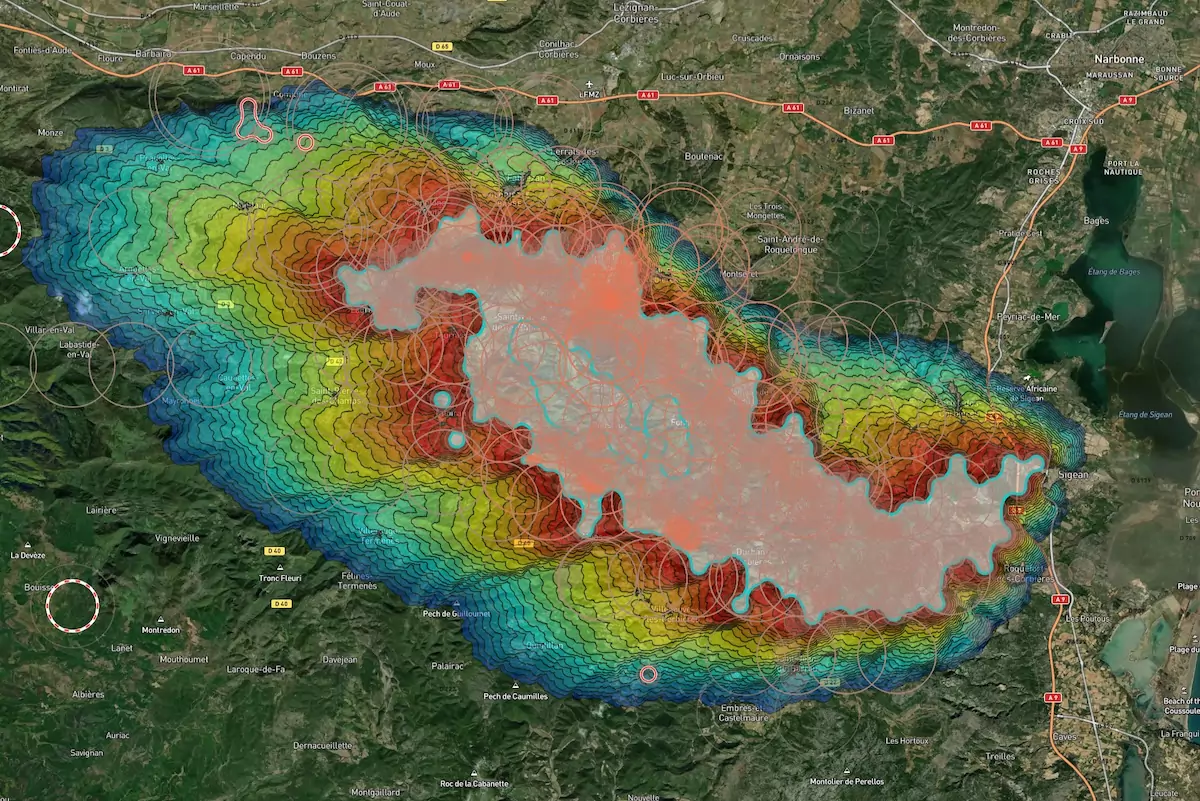The wildfire tearing through the Corbières region of southern France has now become the worst blaze the country has seen since 1949, as more than 16,000 hectares of forest and scrubland have gone up in flames. While cooler overnight temperatures helped slow its advance, officials say the fire remains active and dangerously unpredictable.
This latest development comes a day after the fire’s rapid spread across the Aude department, which left at least one person dead and thousands evacuated. Since then, the number of injured has risen to 13, including eleven firefighters, with two individuals in critical condition.
The villages of the Corbières massif remain on high alert. Emergency crews are battling against time – and the wind – to prevent further disaster. “Our strategy is to hit fast and hard before this wind rises,” said Colonel Christophe Magny, head of Aude’s firefighting operations. While the fire is progressing more slowly, around 90 kilometres of its perimeterremain active, much of it in difficult and steep terrain.
A massive response, but the danger isn’t over
Some 2,000 firefighters are currently deployed in the area, backed by aerial resources operating continuouslythroughout the day. According to local authorities, 36 homes and 40 vehicles have already been destroyed or seriously damaged.
Seventeen temporary shelters have been opened across the department, housing nearly 1,800 evacuees, while three people remain unaccounted for. A medical-psychological emergency unit has been activated in Narbonne to support those traumatised by the blaze.
The Prefecture of Aude continues to advise residents in at-risk areas to remain indoors unless formally evacuated. Those who have already fled their homes are not yet permitted to return.
Watch the evolution of the fire here (source: OroraTech)
A fire fuelled by climate breakdown
France’s Minister for Ecological Transition, Agnès Pannier-Runacher, has linked the fire directly to climate change, citing drought and record heat as key drivers. “This is the largest fire France has experienced since 1949,” she said on Franceinfo. “It is a fire that results from the drought in this region and the broader climatic situation our country is facing.”
Her comments come amid confirmation from the European Drought Observatory that over 51% of soils across Europe and the Mediterranean are now affected by drought — the highest rate ever recorded at this time of year.
Despite a shift in wind from the hot, dry tramontane to a cooler sea breeze, the fire’s containment remains uncertain. Authorities continue to urge caution, warning that any flare-up could reignite large sections of forest.
Stay updated with Monaco Life: sign up for our free newsletter, catch our podcast on Spotify, and follow us across Facebook, Instagram, LinkedIn, and Tik Tok.
Photo source: OroraTech
